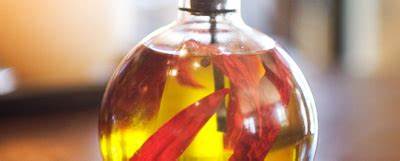




Food, Not Fluff - Hydrosols
Greg Farrell, reporting in USA today in an article titled "Bottling Botanical Essences, " states that in 1998, "these products racked up sales oc $4 billion. " A three-year-old company, Soth Beach, " which infuses all of its SoBe beverages with these herbs project sales of $180 million this year [1999]." Snapple Beverages also launched a healthy-drink product line called Elements, "peppered with new age ingredients such as ginseng,"reports Farrell.
Martin salzman, chief trend watcher at advertising agency Young and Rubicam, says, " Herbal everything is now. I think we can look for herbal helpers in everything from breakfast cereal to tea bags, from enriched waters to smart yogurts." john Bello, the founder of SoBe, says, " There;s an emerging health consciousness. Its a cultural shift and it has spawned a huge and growing industry."
The mistake made with hydrosols has been to expect them to be sold in the same manner as essential oils or commercial-body-care products. Why not take the idea from the health juice companies: Create little custom fridges, beautifully decorated; splash freshness dates and instructions all ove the labels and advertising and promote the freshness, fragility, and purity of these fabulous substances. One practitioner I know doubled sales of hydrosols by putting a small glass-front fridge in her waiting room it works.!
And there's more to market with hydrosols. First, we're talking water here. Today aound 30 per cent of people carry bottles of water whereever they go. This is a new consciousness in plain view. Water is chic. Water in in. Water improves overall health, and people notice the difference.
And hydrosols are water! Even better, hydrolates taste best when diluted with water, and they have definite healing properties. It's water that works and tastes like a health drink. And hydrosols are no more expensive than those little four-ounce "green drinks." And isn't linden blossom or wild ginger as exotic as mango and lichee?
Reference: Hydrosols: The Next Aromatherapy: Suzanne Katty
Articles - Most Read
- Home
- What are Hydrosols
- What are Hydrosols-2
- The Monographs
- How to Make a Hydrosol
- Table of Common Latin Names and pH Values - F - O
- Distilled or Extracted Specifically For Therapeutic Use - 3
- What isn't a Hydrosol?
- Kurt Schnaubelt
- Table of Common Latin Names and pH Values - P - S
- Wholly Water!
- Blue Babies
- Mature Skin
- Supply and Demands
- Recipes Alpha F
- Hydrosols In The Marketplace
- Hemorrhoids
- Nelly GrosJean
- Chemicals: Friends or Foes?
- Water as Medicine
- Genitically Modified Plants
- Water Quality
- Influences
- The Educated Consumer
Articles-latest
- Comptonia peregrinal/Sweet Fern- pH 3.8
- Citrus clementine (fe) Clementine Petitgrain- pH 4.3-4.4
- Citrus aurantium var. amara (flos) /Neroli Orange Blossom-pH3.8-4.5
- Cistus ladaniferus/Rock Rose-pH 2.9-3.1
- Cinnamomum zeylanicum (ec) Cinnamon Bark-pH3.3
- Chamaemelum nobile/Roman Chamomile - pH 3.0-3,3
- Centaurea cyanus/Cornflower/Bachelor's Button-pH 4.7-5.0
- Cedrus atlantical/Cedarwood/Atlas Cedar-pH 4.1- 4.2
- Hydrosols -The PH - Anomalies
- Hydrosols- Establishing Shelf Life and Stability
- Boswellia carterii/FRANKINCENSE
- Asarum canadense/ Wild Ginger/Canadian Ginger
- Artemesia vulgaris / Artemesia
- ARTEMESIA DRACUNCULUS - TARRAGON
- Angelica archangelica / Angelica Root - Hydrosols
- The Key, or More Correctly, the pH - 2 - Hydrosols
- The Key, or More Correctly, the pH-Hydrosols
- The Hard pHacts - Hydrosols
- Calamus Root/Sweet Flag - ACORUS CALAMUS
- Yarrow - Achillea millefolium - Hydrosols
- Balsam Fir - Abies balsamea - Hydrosols
- How the Monograps are Presented
- The Three-Week Internal Protocol - Hydrosols
- Protocols - Hydrosols

